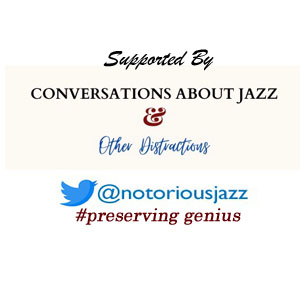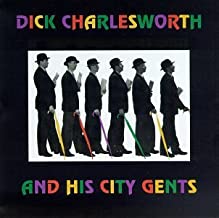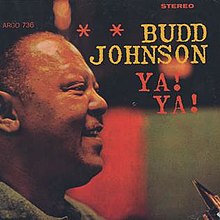
Daily Dose Of Jazz…
Claude Abadie was born on January 16, 1920 in Paris, France. He was interested in New Orleans jazz and Chicago jazz from an early age, and formed his own ensemble in 1941 to play in the Dixieland-revival style. Boris Vian played in the group from 1943.
Soon after, Abadie’s ensemble included Claude Luter, Jef Gilson, Raymond Fol, and Hubert Fol. He founded a new ensemble in 1949, which included Jean-Claude Fohrenbach and Benny Vasseur, but quit music in 1952, not returning to performance until 1963.
In 1965 he formed a large ensemble to play contemporary jazz and among his sidemen was Paul Vernon. Clarinetist and bandleader Claude Abadie turned 100 on his birthday and passed away on March 29, 2020.

More Posts: bandleader,clarinet,history,instrumental,jazz,music

Daily Dose Of Jazz…
Harry Roy was born Harry Lipman on January 12, 1900 in Stamford Hill, London, England, and began to study clarinet and alto saxophone at the age of 16. He and his brother Sidney formed a band which they called the Darnswells, with Harry on saxophone and clarinet and Sidney on piano. During the 1920s they performed in several prestigious venues such as the Alhambra and the London Coliseum, under names such as the Original Lyrical Five and the Original Crichton Lyricals. They spent three years at the Café de Paris, and toured South Africa, Australia, and Germany.
By the early 1930s, Harry was fronting the band under his own name, and broadcasting from the Café Anglais and the Mayfair Hotel. In 1935 he married Elizabeth Brooke, daughter of the white Rajah of Sarawak, with whom he appeared in two musical films, Rhythm Racketeer and Everything Is Rhythm.
During World War II, he toured with his band, Harry Roy’s Tiger Ragamuffins. He was at the Embassy Club in 1942, and a little later, toured the Middle East, entertaining troops. In 1948, Roy traveled to the United States but was refused a work permit, so returning to Britain, he reformed his band and scored a hit with his recording of Leicester Square Rag.
By the early 1950s the big band era had come to an end and his band split up, sending him drifting in and out of the music scene. That decade he ran his own restaurant, the Diners’ Club until it was destroyed by fire. By 1969 Harry returned to music, led a quartet in London’s Lyric Theatre’s show Oh Clarence and his own Dixieland Jazz Band residency during the summer at Sherry’s Dixieland Showbar in Brighton, but by then he was in failing health. Clarinetist and dance band leader Harry Roy passed away in London on February 1, 1971.

More Posts: bandleader,clarinet,history,instrumental,jazz,music

Daily Dose Of Jazz…
Joe Licari was born on January 10, 1934 in Brooklyn, New York and studied with Bob Wilber. His influences were Benny Goodman, Frank Teschemacher, Pee Wee Russell, Johnny Dodds, Sidney Bechet, and Jimmie Noone, using some of their ideas to find his own voice.
Known as an especially “hot” player with an exuberant and always emotive attack, Licari has worked along side of Roy Eldridge, Wild Bill Davison, Conrad Janis, Big Chief Russell Moore, Connie Kay, Bob Haggart, Vic Dickenson, Pee Wee Erwin, Doc Cheatham and the vocalist Julie Wilson. He’s also appeared in films, on television and radio shows and in clubs, sometimes standing in for Woody Allen.
As a leader, he recorded three albums and dozens as a sideman working as a featured player on albums by The Red Onion Jazz Band, Julie Wilson, Big Chief Russell Moore, Herb Gardner, Dick Voigt’s Big Apple Jazz Band, Jim Lowe, Dorothy Loudon, and Betty Comora. As a member of the Grove Street Stompers, they were a prominent fixture for decades on Monday nights at Arthur’s Tavern in Greenwich Village.
Clarinetist Joe Licari continues to record and perform at various clubs around New York City with The Speakeasy Jazz Babies, The Smith Street Society Jazz Band, Swing 39, Mark Shane. Delta Five, and Jon-Erik Kellso`s Hot Four.

More Posts: clarinet,history,instrumental,jazz,music

Daily Dose Of Jazz…
Dick Charlesworth, born Richard Anthony Charlesworth on January 8, 1932 in Sheffield, England. Attending King Edward VII School, at 16, he became a clerk in the Ministry of Labour and was in due course transferred to London. He bought a clarinet and started playing jazz as a hobby in 1952. Entirely self-taught, he became good enough to play clarinet and saxophone in a dance band and performed with jazz bands in south London including Jim Weller’s Jazzmen.
He formed his first group in 1956 and his Dick Charlesworth’s Jazzmen won the South London Jazz Band Championship in 1957. His group was signed by the Melodisc label, and they recorded an EP in December 1957 and produced an album for Doug Dobell’s 77 Records.
Leaving the Civil Service in 1959 he became a professional musician and signed a recording contract with EMI, remarketing the group as Dick Charlesworth’s City Gents. This was the time of light jazz, sporting distinctive attire of pin stripes and bowler hats, with their Latin motto, Dum vivimus vivamus, simply translated as “While we live, let us enjoy life”. They charted one single Billy Boy on the UK Singles Chart in 1961.
When jazz went out of vogue in the Sixties, Dick broke up his band, and from 1964 to 1969 fronted a band on the cruise liners. He then settled in Mojacar, Spain where he ran a music bar. Returning to Britain in 1977, he was active on the London jazz scene until the early 2000s working with, among others, Keith Smith, Rod Mason, Alan Littlejohn, Denny Wright, and appeared on the BBC Radio series, Jazz Score.
In his later years, Charlesworth lived in Thames Ditton, Surrey, and played a residency at various pubs with his band The Dick Charlesworth’s Fraternity Four, and released their final recording in 2004. Clarinetist, saxophonist and bandleader Dick Charlesworth passed away following a heart attack on April 15, 2008, at the age of 76.

More Posts: bandleader,clarinet,history,instrumental,jazz,music,saxophone

Daily Dose Of Jazz…
Budd Johnson was born Albert J. Johnson III on December 14, 1910 in Dallas, Texas. He initially played drums and piano before switching to tenor saxophone. In the 1920s he performed in Texas and parts of the Midwest, working with Jesse Stone among others.
Making his recording debut while working with Louis Armstrong’s band from 1932 to 1933, he is more known for his work, over many years, with Earl Hines. He was an early figure in the bebop era, doing sessions with Coleman Hawkins in 1944. The 1950s saw Budd leading his own group and doing session work for Atlantic Records, being the featured tenor saxophone soloist on Ruth Brown’s hit Teardrops From My Eyes.
In the mid-1960s he began working and recording again with Hines. His association with Hines is his longest lasting and most significant. In 1975 he began working with the New York Jazz Repertory Orchestra. In 1993 he was inducted into the Big Band and Jazz Hall of Fame.
Throughout his career, he recorded ten albums as a leader and played and recorded thirty~two albums as a sideman with among others, Cannonball Adderley, Ben Webster, Benny Goodman, Big Joe Turner, Dizzy Gillespie, Carmen McRae, Bud Powell, Carrie Smith, Duke Ellington, Quincy Jones, Count Basie, Roy Eldridge, Claude Hopkins, Etta Jones, Jimmy Smith, Randy Weston, Gil Evans, and Billie Holiday.
Tenor and soprano saxophonist and clarinetist Budd Johnson passed away of a heart attack on October 20, 1984 at the age of 73 in Kansas City, Missouri.

More Posts: bandleader,clarinet,history,instrumental,jazz,music,saxophone

